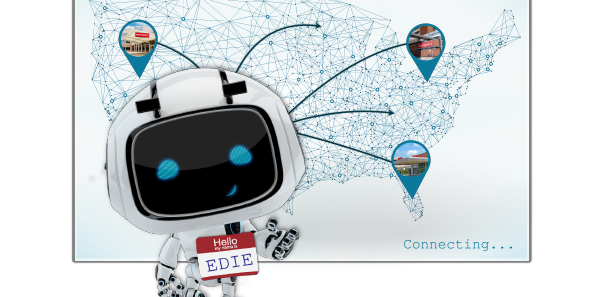
This article is not about busting drug-seekers.
Explore This Issue
ACEP Now: Vol 36 – No 03 – March 2017This article is about coordinating care for our emergency department’s highest utilizers to give them better care, make our lives and workflow better, and save our hospitals and health systems millions of dollars.
Imagine several scenarios:
- A patient with schizophrenia or sickle cell disease shows up in crisis, and on your tracking board, an icon shows up that directs you immediately to a patient-specific care plan that has proven success in decreasing length of stay and hospitalizations.
- A young male says he has severe right flank pain with a history of disc disease and kidney stones. A flag on your tracking board tells you he has had eight previous ED visits this year for the same complaint, two abdominal/pelvic CTs with no stones, and a prescription-monitoring program filled-prescription history suggesting 18 opioids from seven different providers. This is all available on a single page with one click.
We don’t have to imagine these patients; they show up every shift. The paradigm shift here is a tool providing upfront information. In a concise manner, it alerts you to high-risk/high-utilization attributes, protocols, and suggestions to improve the patient’s overall health. A highly secure HIPAA-compliant system that starts the conversation with, “How can we find you a long-term solution?” instead of negotiating over drugs. It goes beyond hunches and clinical suspicion and is based on data and information. It enables you not just to be aware of the patient’s relevant history but also to collaborate on a single patient-specific plan of care shared across all providers with a relevant treatment relationship to the patient.
This system isn’t a dream. It exists already—meet EDIE! The Emergency Department Information Exchange (EDIE or PreManage ED) has changed the everyday practice of thousands of us in the trenches. It has become another tool in the armamentarium of the emergency physician, just as the CT scanner and point-of-care ultrasound have.
It is automated and real-time. It’s also quite simple to implement and use. When patients register in any EDIE-connected emergency department, their demographics are immediately sent to the cloud, and in a few hundred milliseconds, your computer searches a database, compiles a patient-specific history, and scans that history for risk patterns of which you might want to be aware. In real time, it alerts you to these patient-specific insights via fax, text, direct messaging, secure email, or an electronic icon embedded in your ED tracking board. It provides critical information on patients, such as how many emergency department visits patients have had in the last year, where they presented, their drug history, other providers who are involved with the patients (along with their contact information), and finally (and perhaps most critically), if there is a patient-specific care management plan that could guide treatment today.
EDIE is integrated with the prescription drug-monitoring program (PDMP). In Washington state, EDIE also pushes the PDMP data to you with risk-based triggers. Three screen log-ins? Gone! The information is right there and formatted for easy digestion. EDIE knows no bias; it searches on the 22-year-old tattooed male and the 32-year-old housewife holding her baby just the same. If it finds something relevant, you’re immediately alerted. If not, you go about your business without wasting time searching for something that may not even exist.
Care coordination across delivery systems is critical to improving care. In Oregon and elsewhere, the same EDIE information on Medicaid and other insured patients is also sent to their primary care providers.
This is a system with proven success. Through an alliance with Collective Medical Technologies (CMT), ACEP has seen this system mature in Washington and Oregon, as well as many other states, with more states coming online in 2017. Washington state, in the first year alone, experienced a 24 percent decrease in opioid prescriptions written from emergency departments, a 14 percent reduction of super-utilizer visits, and state Medicaid savings of more than $32 million.
With the emergency department serving as the gateway to health care for many individuals, ACEP’s goal is to continue to promote this system, with active progress in a dozen other states. This tool shows the value of emergency medicine and truly is win-win-win for patients, providers, and health care systems.
Join us in demanding better care for our high utilizers and work with your state hospital association and department of health to add this valuable resource to your cache of tools to make a meaningful, data-driven difference for your patients.
Visit Collective Medical Tech or read “Seven Best Practice Resources” for more information.
Disclosure: ACEP endorses EDIE and has an agreement to exclusively promote the product as well as help develop standards for emergency department information exchange systems nationwide.
 Dr. Anderson is an emergency physician in Seattle and a member of the ACEP Board of Directors.
Dr. Anderson is an emergency physician in Seattle and a member of the ACEP Board of Directors.
Pages: 1 2 | Multi-Page





3 Responses to “Emergency Department Information Exchange Can Help Coordinate Care for Highest Utilizers”
April 2, 2017
Ira WoodIt is concerning that ACEP has an exclusive agreement to promote this product. There are other similar products available. This article, which could have been more beneficial and had widespread applicability is nothing more than an advertisement. I would have thought that exclusive agreements like this would be prohibited?
April 2, 2017
Melissa RockefellerThank you for bringing EDIE more attention. I find it a useful tool for coordinating care and better understanding the person who is my patient. I’m looking forward to the PDMP being automatically pulled in which should happen this year in Oregon.
December 11, 2017
Tom ScalettaIn our busy EDs, we are faced with paying for EDIE or adding another full time case manager. I think we can identify 90-95% of our frequent visitors, especially our superutilizers with our own EMR.
Since case managers usually have twice the workload to accomplish than is humanly possible (and we have great ones), we will opt to increase staffing.
Frankly, I think EDIE will be a flash in the pan, especially as Epic ER all adhere to new “data blocking” prohibitions.